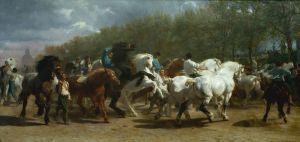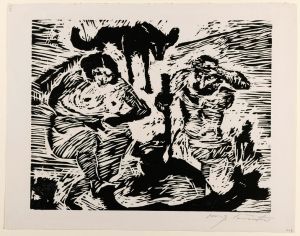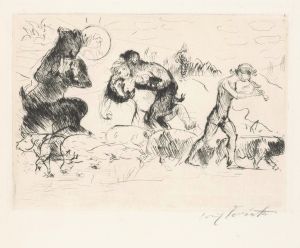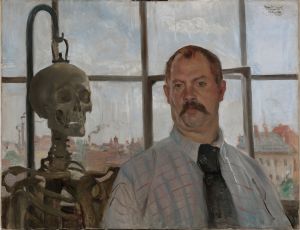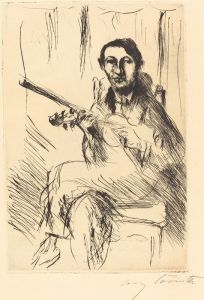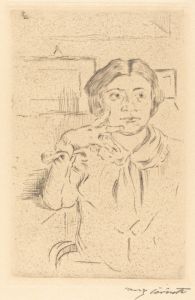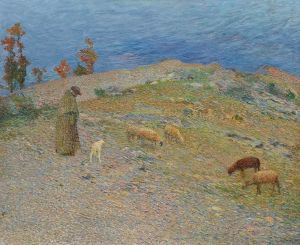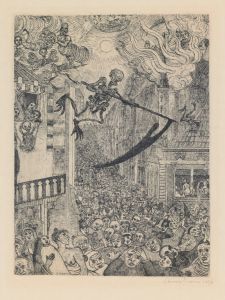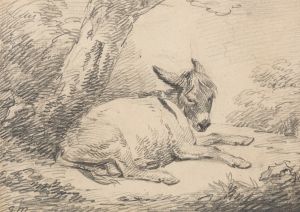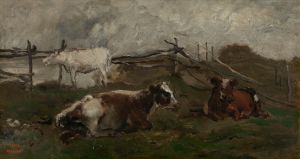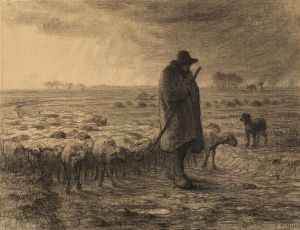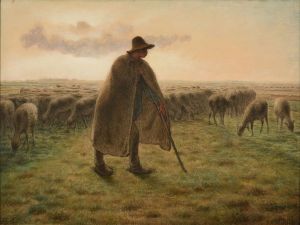
Grazing Sheep
A hand-painted replica of Lovis Corinth’s masterpiece Grazing Sheep, meticulously crafted by professional artists to capture the true essence of the original. Each piece is created with museum-quality canvas and rare mineral pigments, carefully painted by experienced artists with delicate brushstrokes and rich, layered colors to perfectly recreate the texture of the original artwork. Unlike machine-printed reproductions, this hand-painted version brings the painting to life, infused with the artist’s emotions and skill in every stroke. Whether for personal collection or home decoration, it instantly elevates the artistic atmosphere of any space.
Lovis Corinth was a prominent German painter and printmaker, known for his contributions to the Impressionist and later Expressionist movements. One of his notable works is "Grazing Sheep," a painting that exemplifies his skill in capturing the natural world with a keen eye for detail and a vibrant use of color.
"Grazing Sheep" was created in 1893, during a period when Corinth was deeply influenced by the Impressionist movement. This painting depicts a serene pastoral scene, featuring a flock of sheep grazing in a lush, green meadow. The composition is characterized by its loose brushwork and the use of light to create a sense of atmosphere and depth. Corinth's ability to convey the tranquility of the countryside is evident in the way he renders the soft textures of the sheep's wool and the gentle undulations of the landscape.
The painting reflects Corinth's interest in the natural world and his ability to capture the fleeting effects of light and color. The use of light in "Grazing Sheep" is particularly noteworthy, as it highlights the contrast between the illuminated areas of the meadow and the shadows cast by the sheep and surrounding foliage. This interplay of light and shadow adds a dynamic quality to the scene, drawing the viewer's eye across the canvas and creating a sense of movement.
Corinth's technique in "Grazing Sheep" demonstrates his mastery of color and form. The palette is dominated by various shades of green, punctuated by the white and brown tones of the sheep. This harmonious color scheme enhances the overall sense of calm and harmony in the painting. The brushstrokes are loose and expressive, a hallmark of Corinth's style, which allows for a more spontaneous and lively depiction of the scene.
Lovis Corinth's work often explored themes of nature, human emotion, and the passage of time. "Grazing Sheep" fits within this broader context, as it captures a moment of peaceful coexistence between animals and their environment. The painting can be seen as a reflection of Corinth's appreciation for the beauty and simplicity of rural life, as well as his technical prowess as an artist.
Throughout his career, Corinth's style evolved, and he became known for his bold use of color and dynamic compositions. "Grazing Sheep" represents an important phase in his artistic development, showcasing his ability to blend Impressionist techniques with his own unique vision. The painting remains a testament to Corinth's talent and his contribution to the art world.
Today, "Grazing Sheep" is held in high regard as an example of Corinth's early work and his skill in landscape painting. It continues to be admired for its beauty and the sense of tranquility it conveys, making it a significant piece in the study of Lovis Corinth's artistic legacy.





